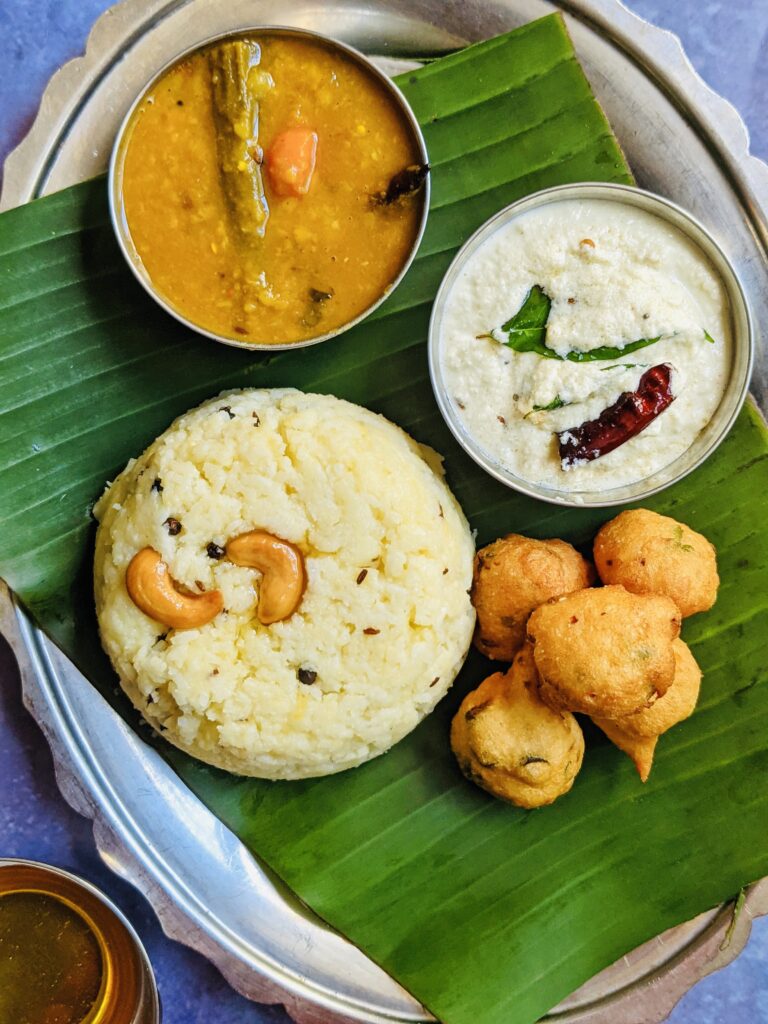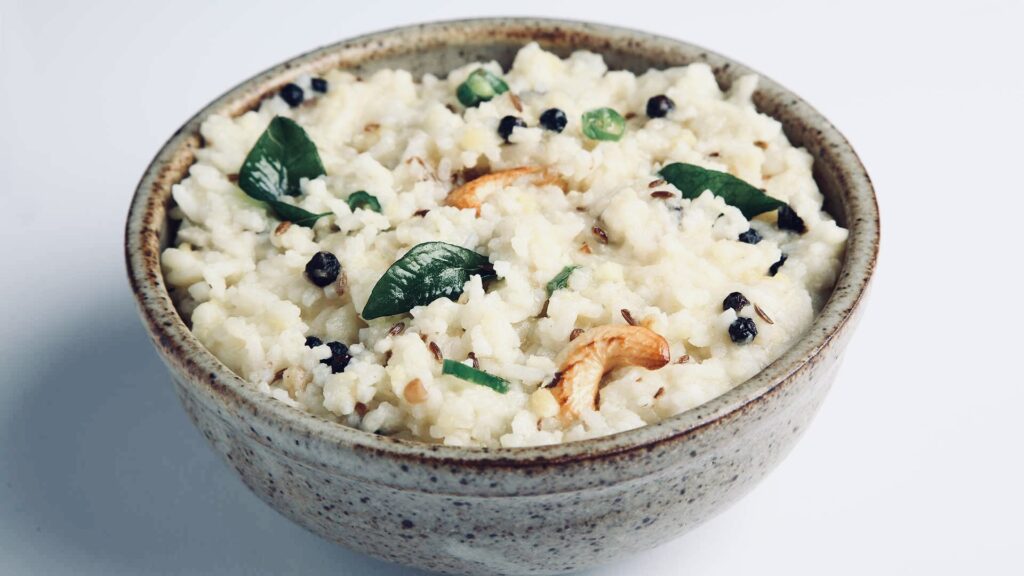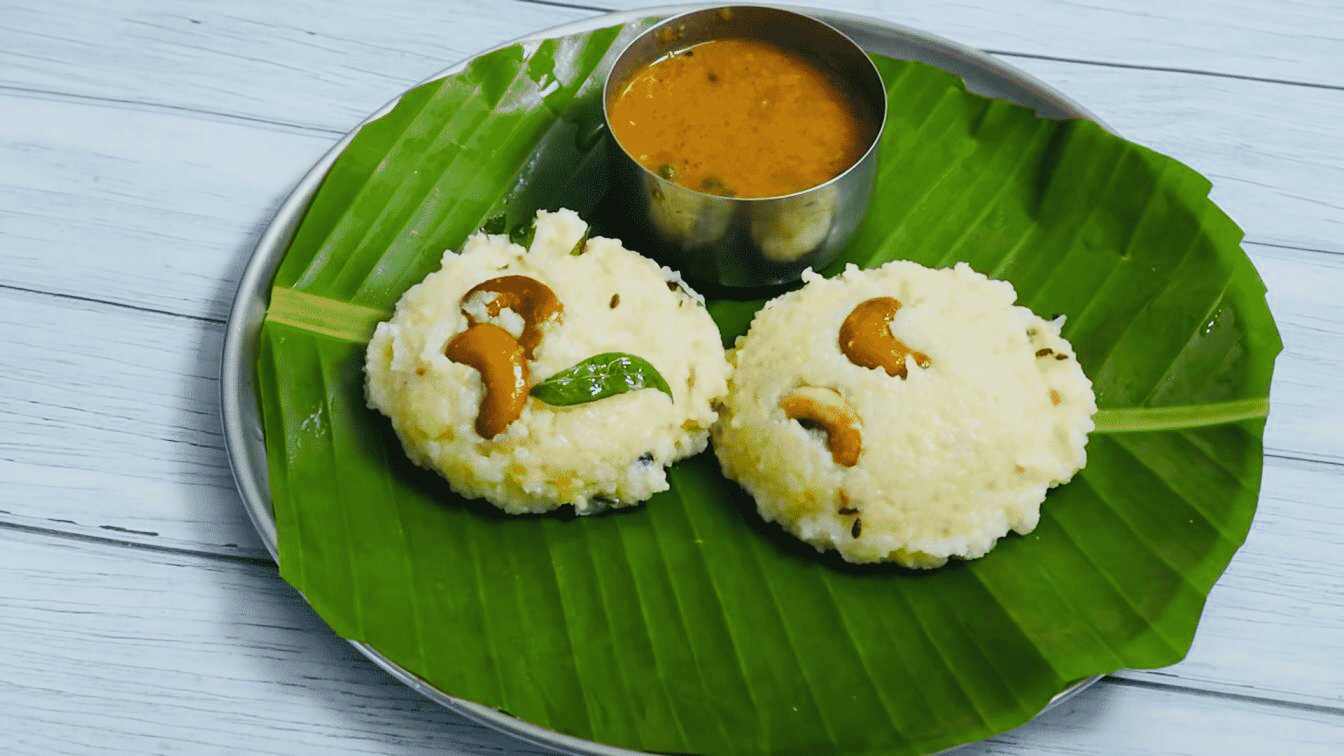Table of Contents

Pongal is a popular South Indian dish traditionally prepared during the harvest festival of the same name. It is a flavorful and comforting dish made with rice and lentils. Here is a brief overview of the Pongal recipe:
To make Pongal, start by rinsing 1 cup of rice and 1/4 cup of split yellow moong dal (lentils). Cook the rice and lentils together with 4 cups of water until they are soft and well cooked.
In a separate pan, prepare the tempering by heating 1 tablespoon of ghee (clarified butter) and 1 tablespoon of oil. Add mustard seeds, cumin seeds, black peppercorns, turmeric powder, and asafoetida. Then, fry cashew nuts until golden brown and add grated ginger, chopped green chilies, and curry leaves.
Combine the tempering mixture with the cooked rice and lentils, season with salt, and garnish with chopped cilantro. Serve hot with coconut chutney, sambar, or pickle.
Pongal is a versatile dish that can be customized according to your taste. You can add vegetables for extra nutrition or adjust the spice level to suit your preference. It is a delicious and wholesome dish that can be enjoyed for breakfast or lunch, providing a satisfying meal for any occasion. In this recipe, I will guide you through the step-by-step process of making Pongal.

Ingredients Pongal:
- 1 cup rice
- 1/4 cup split yellow moong dal (lentils)
- 4 cups water
- 1 tablespoon ghee (clarified butter)
- 1 tablespoon oil
- 1 teaspoon mustard seeds
- 1 teaspoon cumin seeds
- 1/2 teaspoon black peppercorns
- 1/2 teaspoon turmeric powder
- A pinch of asafoetida (hing)
- 8-10 cashew nuts
- 1 tablespoon grated ginger
- 2 green chilies, finely chopped
- 10-12 curry leaves
- Salt to taste
- 2 tablespoons chopped cilantro (coriander leaves)
Step By Step Instructions Of Pongal Recipe:

Step 1: Rinse the rice and lentils
- Take the rice and lentils in a bowl and rinse them under running water until the water runs clear. Drain the water and set aside.
Step 2: Cook the rice and lentils
- In a pressure cooker or a large pot, add the rinsed rice and lentils along with 4 cups of water.
- Pressure cook for about 3-4 whistles or cook in a pot until the rice and lentils are soft and well cooked.
Step 3: Prepare the tempering
- Heat ghee and oil in a pan over medium heat.
- Add mustard seeds and let them splutter.
- Add cumin seeds, black peppercorns, turmeric powder, and asafoetida. Sauté for a few seconds until fragrant.
Step 4: Add cashews and aromatics
- Add cashew nuts to the pan and fry until they turn golden brown.
- Add grated ginger, chopped green chilies, and curry leaves. Sauté for a minute until the flavors are released.
Step 5: Combine the tempering with the cooked rice and lentils
- Open the pressure cooker or pot containing the cooked rice and lentils.
- Pour the tempering mixture from the pan into the rice and lentils. Mix well to combine.
Step 6: Season with salt and garnish
- Add salt to taste and mix well. Adjust the seasoning if needed.
- Finally, add chopped cilantro and give it a good stir.
Step 7: Serve hot
- Pongal is best enjoyed hot. Serve it in bowls or on plates with coconut chutney, sambar (a lentil-based vegetable stew), or any pickle of your choice.
Tips Of Making Pongal:
- If you prefer a creamier texture, you can mash the rice and lentils slightly with the back of a spoon after cooking.
- You can add vegetables like carrots, beans, or peas to make it a more nutritious dish.
- For a healthier version, you can use brown rice instead of white rice.
- Adjust the spice level according to your preference by adding or reducing the number of green chilies.
That’s it! You have successfully prepared Pongal, a traditional South Indian dish. Enjoy its delicious flavors and share it with your loved ones during the festive season or any time you crave a comforting meal.





3 thoughts on “Pongal Recipe | Just 7 Easy Steps.”